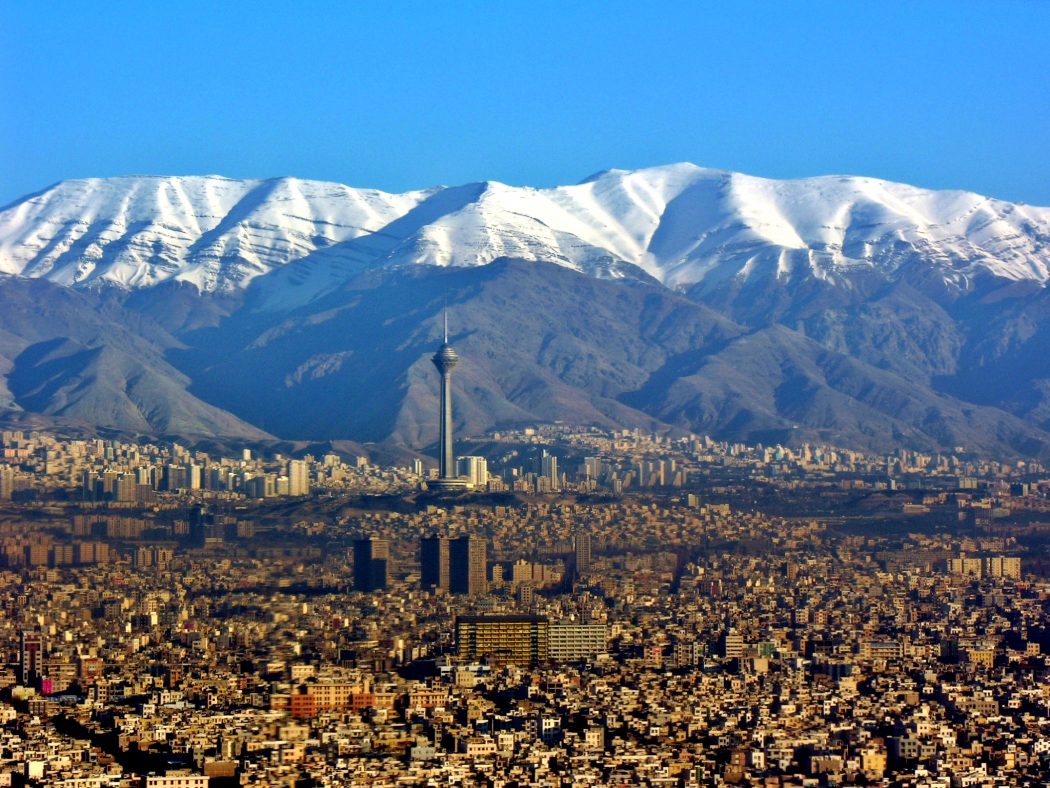The True Intention Behind Washington’s Support for Iranian Demonstrations.
On December 28, a small protest broke out in Mashhad, Iran, allegedly over egg prices. Within a few days it had evolved into large demonstrations spread through 80 cities across the nation. Unlike the 2009 “Green Movement”, protests that were unquestionably a response to voting irregularities, these protesters seem to lack a clear, coalesced demand of their government.
In 2015, Iran struck a deal with six world powers limiting Iran’s nuclear energy program, in return for lifting the crippling economic sanctions that had been imposed since the 1979 Iranian revolution. In the two years that followed, this deal did not cultivate prosperity — despite President Hassan Rouhani’s promises. In turn, many citizens took to the streets this past month to protest their continued economic hardship.
Seizing the mutinous moment, various dissenters ranging across the socio-political spectrum joined the demonstrations. There were hardline conservatives protesting the moderate President Rouhani, alongside reformists challenging the theocratic regime. Some were protesting corruption, some called for social freedom, and others were challenging the country’s support of Palestinians. To add to the conglomerate of unhappy citizens, approximately 4000 people attended a pro-government rally two days after protests broke out in Mashhad.
These mass displays were not spearheaded by any recognizable revolutionary figure or organization. With no individual leader to scapegoat or apply pressure onto, the government was driven to attack the demonstrators themselves, arresting some 3700 people. The government also temporarily restricted access to certain social media apps — a crucial communication tool used by demonstrator’s to organize.
Over the course of 21 days, there were approximately 21 reported casualties during rioting, as well as three reported deaths among the imprisoned individuals.
Washington’s response was arrogantly conclusive about the Iranian people’s desire for drastic regime change
The response from the international community was largely impartial and cautious. The Trump Administration, however, showed significant political partisanship and distastefully encouraged greater resistance on behalf of the protesters. The Iranian government’s counteraction was sensationalized as a brutal crackdown, and Trump’s tweets were teeming with manipulative buzz phrases like ‘freedom of expression’ and ‘human rights violations’.
Moreover, Washington’s response was arrogantly conclusive about the Iranian people’s desire for drastic regime change, an abridged version that largely ignores the nuanced complexity of the issue.
On January 3rd, Iran’s UN Ambassador Gholamali Khoshroo addressed a letter to the UN security council that accused Washington of “grotesque interference [that] incited Iranians to engage in disruptive acts”.
The State Department’s Undersecretary for Public Diplomacy and Public Affairs, Steve Goldstein, admitted to actively communicating with protesters through social media in order to “encourage the protesters to continue to fight for what’s right”, or in other words, what’s right for America.
By restricting social media access, President Rouhani curbed protester’s efforts to organize — which certainly violated fundamental freedoms outlined in Article 19 of the Universal Declaration of Human Rights. However, the U.S. press may also be guilty of misrepresenting Rouhani’s media muting as an insulation tactic aimed to “prevent the outside world from observing its own repression,” as State Department spokesperson Heather Nuart suggested. Perhaps Rouhani was not trying to keep dangerous broadcasting from leaking out, but rather to keep the meddling Americans from permeating in and spreading an ‘overthrow’ slogan that undermines the legitimacy of the Iranian voices.
Beyond the United States’ abrasive response to the protest, Trump also toyed with the idea of withdrawing from the 2015 Iran Nuclear Deal and reinstituting harsh trade sanctions. The world breathed a collective sigh of relief on January 5 when he opted to temporarily extend the deal for another 90 days.
In spite of that minor concession, Trump used the protests as an excuse to impose new economic sanctions on 14 Iranian individuals as punishment for their alleged human rights violations. He also promised that this would be the very last time he would certify the “worst deal ever”.
Trump has fostered a precarious economic relationship with Iran. This psychological wall has the same effect on the Iranian economy as literally reenacting the draconian sanctions that existed before the 2015 deal.
Considering that his Twitter persona is a champion of the Iranian people, ostensibly crusading for their best interests, it seems counterintuitive to threaten future embargos that would only further economically paralyze the people.
Well, it’s only illogical if you’re buying the magnanimous charade that Washington is pushing.
It is not unthinkable that the intention was to cause further internal dissatisfaction that weakens the Iranian regime in possession of nuclear weapons
Look at the distressing double standard that Washington apparently holds with regards to human rights violations. If the whole point is that they are universally respected and enforced, then why is United States embargoing trade over three prison casualties in Iran, while proposing a $110 billion dollar arms trade deal with Saudi Arabia? If anyone, Saudi Arabia’s Crown Prince Mohammed bin Salman deserves sanctions for triggering a humanitarian crisis in Yemen.
Influencing a foreign nation through social media, disciplinary sanctions, and extreme hype about human rights violations are all instruments of control. It is not unthinkable that the intention was to cause further internal dissatisfaction that weakens the Iranian regime in possession of nuclear weapons; perhaps even incite regime change that ultimately brings to power a more US compliant regime.
Now that the protests have subsided and the Iranian government has released 440 prisoners, it has become clear that among international responses to the unrest, America’s loud whistle of justice echoed sneaky, self-serving motives. The United States, with its history of exploitative refereeing in Iran, needs to practice some reserve, sit on the bench, and let the domestic politics play themselves out. The people’s efforts are only legitimized when they are free from international intervention.


